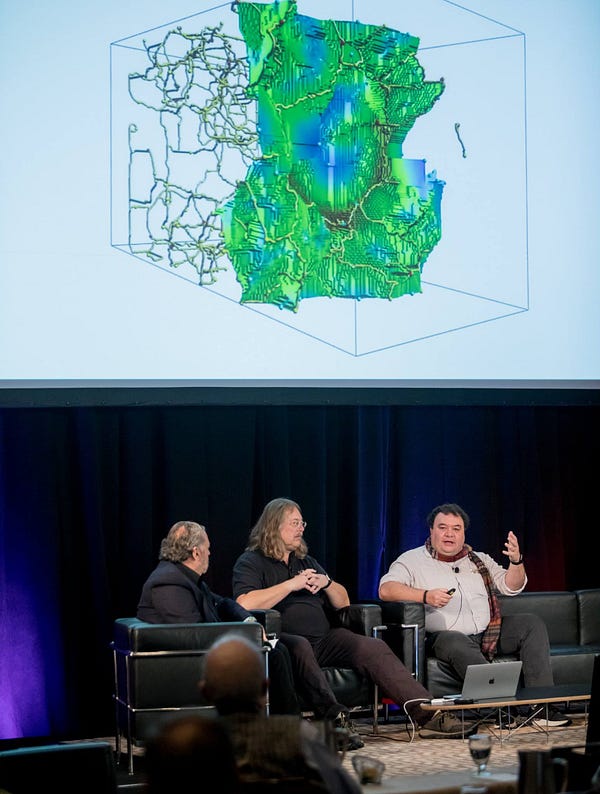FiRe 2017: Noticing What We Never Expected to See: New Frameworks for Visualizations
By Charly Kuecks

“The greatest value of a picture is when it forces us to notice what we never expected to see,” said John W. Tukey is best known as the inventor of the box-and-whisker plot, one of the most widely-used diagrams in statistics. Chris Johnson and Valerio Pascucci of the University of Utah were inspired by this observation of Tukey’s and elaborated on this theme in their panel titled “Visualizing Visualizations: Pictorial Processing in Nature,” moderated by Mark Anderson.
Johnson and Pascucci connected their research into visualization algorithms to the concept of flow, as explored in Anderson’s theory of Flow and Interaction.

For example, a large scale combustion simulation simplified a 10-factor analysis to an easy-to-understand diagram in three dimensions. Using this kind of exploratory data analysis, Johnson claimed scientists “can recognize patterns not captured by data analysis tools.” A new paradigm for visualization led to new scientific discoveries.
Being able to examine the actual features of a real-world process like combustion, comes closer to approximating a scientist’s mental model. At the same time, the team wants to make sure that the visualizations don’t bias their users. The traditional line draw of a Von Kármán vortex going around an island presents information, but in a dull, non-informative manner. Johnson and Pascucci’s animated model doesn’t require a long turnaround time, and is more actionable for oceanographers.
These cutting-edge visualizations can be applied to a wide variety of questions, such as more accurate models of methane molecules, designing a new lithium ion battery with a longer life, and analyzing porous mediums.
Pascucci emphasized the idea of taking Big Data - in this case, terabytes of primary scientific research data — and winnowing out the signal from the surrounding noise. Not only do these visualizations connect scientists to data, these animations are understandable to laypeople.